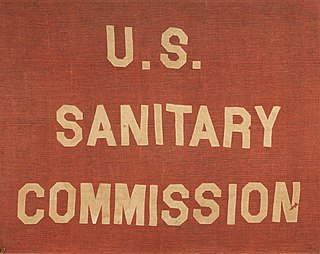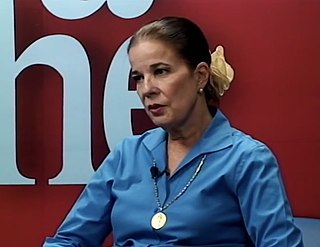Related Research Articles

Frederick Law Olmsted was an American landscape architect, journalist, social critic, and public administrator. He was the father of American landscape architecture. Olmsted was famous for co-designing many well-known urban parks with his partner Calvert Vaux. Olmsted and Vaux's first project was Central Park, which resulted in many other urban park designs, including Prospect Park in New York City and Cadwalader Park in Trenton. He headed the pre-eminent landscape architecture and planning consultancy of late nineteenth-century America, which was carried on and expanded by his sons, Frederick Jr and John C, under the name Olmsted Brothers.

William Walker was an American physician, lawyer, journalist, and mercenary who organized several private military expeditions into Mexico and Central America with the intention of occupying the local nations and establishing slave-hold colonies, an enterprise then known as "filibustering". Walker usurped the presidency of Nicaragua in July 1856 and ruled until May 1, 1857, when he was forced out of the presidency and the country by a coalition of Central American armies. He returned in an attempt to re-establish his control of the region and was captured and executed by the government of Honduras in 1860.

Luis Alberto Monge Álvarez was the President of Costa Rica from 1982 to 1986. He also served as Costa Rica's first Ambassador to Israel from 1963 until 1966.

José María Hipólito Figueres Ferrer served as President of Costa Rica on three occasions: 1948–1949, 1953–1958 and 1970–1974. During his first term in office he abolished the country's army, nationalized its banking sector, and granted women and Afro-Costa Ricans the right to vote, as well as access to Costa Rican nationality to people of African descent. He was a good friend of the Governor of Puerto Rico, Luis Muñoz Marín, praising his political achievements in one of his essays.

The Bancroft treaties, also called the Bancroft conventions, were a series of agreements made in the late 19th and early 20th centuries between the United States and other countries. They recognized the right of each party's nationals to become naturalized citizens of the other; and defined circumstances in which naturalized persons were legally presumed to have abandoned their new citizenship and resumed their old one.

Hoppin' John, also known as Carolina peas and rice, is a peas and rice dish served in the Southern United States. It is made with cowpeas and rice, chopped onion, and sliced bacon, seasoned with salt. Some recipes use ham hock, fatback, country sausage, or smoked turkey parts instead of bacon. A few use green peppers or vinegar and spices. Smaller than black-eyed peas, field peas are used in the South Carolina Lowcountry and coastal Georgia; black-eyed peas are the norm elsewhere.

The United States Sanitary Commission (USSC) was a private relief agency created by federal legislation on June 18, 1861, to support sick and wounded soldiers of the United States Army during the American Civil War. It operated across the North, raised an estimated $25 million in Civil War era revenue and in-kind contributions to support the cause, and enlisted thousands of volunteers. The president was Henry Whitney Bellows, and Frederick Law Olmsted acted as executive secretary. It was modeled on the British Sanitary Commission, set up during the Crimean War (1853-1856), and from the British parliamentary report published after the Indian Rebellion of 1857.

Lewis Baker was the Democratic President of the West Virginia Senate from Ohio County and served from 1871 to 1872.

Manuel María de Peralta y Alfaro was a Costa Rican diplomat and historian. De Peralta y Alfaro was born in Taras, Cartago, Costa Rica, on July 4, 1847. He was the only Costa Rican to ever be given the designation of "Hero of the Motherland" twice.
Charles Christopher Eberhardt was an American diplomat who served as ambassador to Costa Rica.
Walter Clarence Thurston (1894–1974) was an American diplomat who served in Mexico, Guatemala, Nicaragua, England, Costa Rica, Brazil, Paraguay, Switzerland, Spain, Portugal, and the Soviet Union, Costa Rica. He also served as ambassador to El Salvador, Bolivia and Mexico.

Philip Bracken Fleming was a United States Army general and United States Ambassador to Costa Rica.
Eduardo Octavio Trejos Lalli is a Costa Rican internationalist, private consultant and politician. Trejos is the current Costa Rican representative in the Central American Bank for Economic Integration. Trejos was also Director of National Intelligence and Security and has held the position of Deputy Foreign Minister, interim Foreign Minister and Ambassador of Costa Rica to Nicaragua
Rosa María Isabel Urcuyo Rodríguez de Somoza was a Costa Rican-born diplomat and the First Lady of Nicaragua from 1957 to 1963 as the wife of President Luis Somoza Debayle.
Harold Fernando Rivas Reyes is a Nicaraguan diplomat. He was Ambassador to Costa Rica on behalf of the Sandinista National Liberation Front (FSLN) government from February 2007 until January 2018.

Claudia Lucía Chamorro Barrios is a Nicaraguan writer, public health official, and former ambassador of Nicaragua to Cuba and Costa Rica. She served as a diplomat on behalf of the Sandinista government in the 1980s. She later became a critic of the FSLN. She is the author of a memoir, Tiempo de Vivir.
References
- ↑ "Charles N. Riotte - People - Department History - Office of the Historian".
- ↑ Charles N. Riotte (FL Olmstedt Slavery and the South)
- ↑ Frederick Law Olmsted; Jane Turner Censer (1986). Defending the union: the Civil War and the U.S. Sanitary Commission, 1861-1863. Johns Hopkins University Press. p. 535.
- ↑ Houwald, Götz Dieter (1986). Deutsches Leben in Nikaragua: Auswanderer-Schicksale. p. 118.
